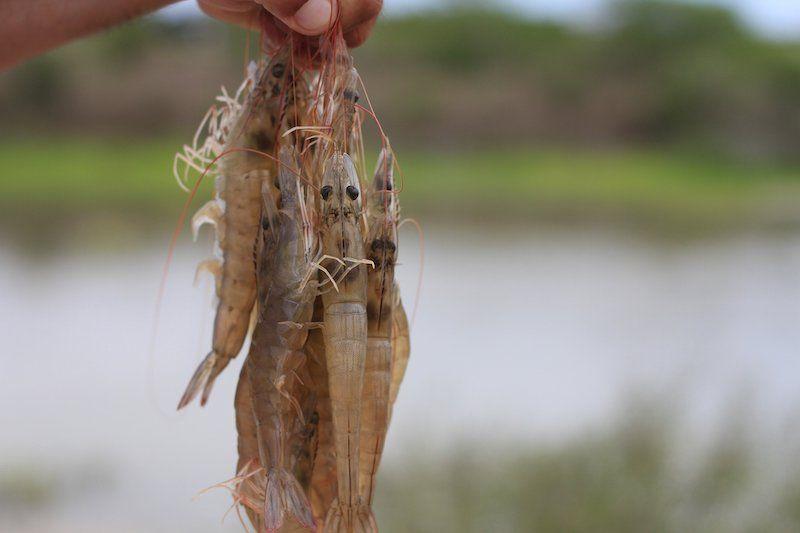The production of shrimp in Mexico is one of the most important, especially when it comes to shrimp that is grown on aquaculture farms.
In 2021, the National Fisheries and Aquaculture Commission (Conapesca) registered 177 thousand 952 tons, in contrast to the 27 thousand 597 from fishing on larger vessels and 35 thousand 172 in smaller ones, according to preliminary figures provided to Journalism Causa Natura via transparency.
The entities of Sinaloa and Sonora have spearheaded the production. At the same time, aquaculture producers say that shrimp farming overcomes the lack of support and adaptations to health and sustainability measures.
“In the last decade we have been working in a forced way, but very consciously... We have learned to row against the tide, to use our own investment force and debt capacity to manage (production)...”, said Miguel Ángel Castro Cosío, president of the Aquaculture Health Committee in Sonora.
The main difficulties, he argues, are the lack of encouragement, support and advice for the work of aquaculturists, who work on the 26,000 hectares that make up the entity's farms.
Last September, Conapesca published the renewal guidelines for one of the funds that are still allocated to the sector. Electricity Fee Support for aquaculture facilities contributes to a 50% discount on the total amount of energy billing.
However, this type of program involves the use of power generators that are mostly powered by burning fuels such as diesel. An industry that, as a result, produces the emission of carbon dioxide.
“The State as the main energy producer, through the Federal Electricity Commission (CFE), can regulate how energy is used in aquaculture. What does it represent? That it is subsidized, without any care, to consume the cheapest energy such as diesel, instead of clean energy because it is more expensive, for example,” explained Daniel Peñalosa, general manager at Shrimp Star.
During the interview, Peñalosa mentions the context of the electricity reform, which has been criticized for reinforcing the participation of the CFE, which works mainly with fuel oil, over other companies that produce more sustainable energy.
“The solution cannot be one-sided, not just the producers and not just the government. There has to be a system of governance in which everyone involved is part of decision-making and policy creation in a way that benefits everyone,” Peñalosa added.
From Sonora, for Miguel Ángel Castro Cosío, it is necessary that energy stimuli be maintained. But he considers it more urgent to focus efforts on “creating sources of employment and, in turn, sources of healthy food, which is the most important thing for a country”.
The aquaculture reality
The aquaculture boom began in the 80s. In Mexico, shrimp farming has positive impacts as alternatives to shrimp production. In 2021, it reached 177 thousand tons, representing 9.3% of total national aquaculture and fishing production. At the same time, it highlights its participation in food security and its presence in the international market.
“Aquaculture is healthy and doesn't prey. On the contrary, it does not use chemicals, agrochemicals and does not waste water that exists in irrigation or rain districts because rain is scarce,” said Castro Cosío about the benefits in relation to the environment.
However, over the past few decades, it has also been documented internationally that unregulated aquaculture can have impacts on the environment, in addition to those documented by the use of energy based on fossil fuels.
In 2016, the Journal of Biological and Health Sciences of the University of Sonora documented some adverse effects on aquaculture development, such as land use change, which affects water storage capacity in the ecosystem and the deforestation of mangrove forests.
Other effects have included the abandonment of shrimp farms, contamination due to lack of treatment in water used for production and the excessive use of fish meal and oil during cultivation. Practices that remain today.
“Shrimp aquaculture in the country is relatively kind to the environment. We are not as aggressive as in other parts of the world, mainly because most farms are semi-intensive... Thanks to the visualization of environmental damage, we have been working hand in hand with producers who are generally quite open to innovating because they understand that it is also convenient to manage their production in such a way that it can be sustained over time,” said Daniel Peñalosa.
Good practices
According to the Sonora Aquaculture Health Committee, of the 55 aquaculture farms in Sonora, 70% have been certified as good practices by the National Service for Food Health, Safety and Quality (Senasica).
“We respect practices because that allows us to ensure that aquaculture is an activity in which we will produce high-quality and totally healthy shrimp,” said Miguel Ángel Castro Cosío.
For this reason, the use of biotechnology has also been implemented in laboratories that work on the genetic improvement of the species, the control of reproduction, the prevention of diseases in the harvest and the conservation of biodiversity.
In Puerto Peñasco, north of Sonora, where aquaculture production is lower than in the center and south, Lázaro Espinosa, former president of the entity's Fisheries Commission, believes that allocating a biotechnology park that does not depend on private companies would also help the improvement.
“Aquaculture could also be established in controlled environments that would allow its production in less favored areas in a sustainable manner,” he said.
Initiatives such as the Park for Innovation and Technological Development in Mariculture (Pidemar) in northwestern Mexico have been planned to operate the Aquaculture Institute of the State of Sonora since 2015, but have not been resumed.



Comentarios (0)